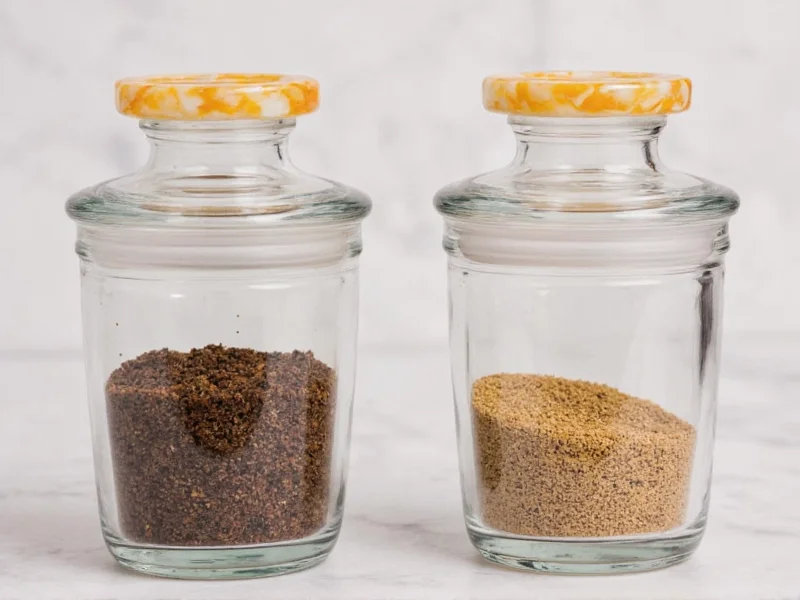Traveling with your favorite seasonings enhances culinary experiences while maintaining dietary preferences. Small glass seasoning containers with lids have become essential for frequent travelers seeking to avoid restaurant sodium levels, accommodate special diets, or simply enjoy familiar flavors abroad. Unlike plastic alternatives, glass preserves taste purity and withstands temperature changes common during transit.
Key Features of Effective Travel Seasoning Containers
When selecting small glass seasoning containers with lids for travel, certain features significantly impact performance. The ideal travel-friendly glass spice containers balance compactness with functionality, ensuring your seasonings arrive intact and ready for use.
| Feature | Travel Benefit | Ideal Specification |
|---|---|---|
| Capacity | Meets TSA liquid restrictions | 1-4 ounces per container |
| Lid Mechanism | Prevents leaks during pressure changes | Screw-top with silicone seal |
| Material Thickness | Resists breakage in luggage | 3-4mm borosilicate glass |
| Shape | Maximizes packing efficiency | Cylindrical with flat sides |
| Weight | Minimizes luggage burden | Under 1.5 ounces empty |
Why Glass Outperforms Plastic for Travel Seasonings
Glass seasoning containers that won't leak during travel offer distinct advantages over plastic counterparts. The non-porous nature of glass prevents flavor absorption and odor retention, crucial when transporting multiple spices. Unlike plastic containers that may leach chemicals when exposed to temperature extremes, food-grade glass maintains integrity whether packed in checked luggage or carried through varying climates.
Professional chefs and frequent travelers prefer durable small glass spice jars with secure lids because they withstand repeated use without degrading. Glass doesn't scratch like plastic, eliminating bacterial harborage points. The material's transparency also allows quick visual identification of contents without opening containers—particularly valuable when rummaging through luggage.
Navigating TSA Regulations with Glass Containers
TSA-approved glass seasoning containers must follow the same 3-1-1 liquid rule as other carry-on liquids. Each container should hold 3.4 ounces (100ml) or less, stored in a single quart-sized clear bag. For checked luggage, the 3-1-1 rule doesn't apply, but proper packing becomes critical to prevent breakage.
When packing compact glass containers for traveling with spices in checked bags, wrap each container in clothing or bubble wrap, then place them in a sealed plastic bag as secondary protection against potential leaks. Position them toward the center of your suitcase, surrounded by soft items that absorb impact. Many travelers report success using specialized spice travel kits with padded compartments that hold multiple small glass seasoning containers securely.
Practical Usage Tips for Travelers
Maximize your experience with travel-friendly glass spice containers through these proven techniques:
- Pre-measure portions: Fill containers with single-meal servings to avoid carrying excess weight
- Label clearly: Use waterproof labels indicating both contents and dietary symbols (e.g., GF, DF)
- Multi-use approach: After spices are consumed, repurpose containers for collecting local spices or souvenirs
- Temperature management: Avoid sudden temperature changes that could cause glass to crack
- Stacking strategy: Choose containers with uniform diameters that nest efficiently in luggage
Maintenance and Longevity
Proper care extends the life of your lightweight glass spice containers for travel. Hand wash with mild soap after each trip—dishwashers' thermal shock can weaken glass over time. Inspect silicone seals regularly for cracks or deformation, replacing them when compression resistance diminishes. Store containers with lids slightly ajar to prevent seal degradation from constant compression.
For international travelers, consider carrying a small repair kit with food-safe epoxy and replacement seals. This addresses minor lid damage that might compromise the leak-proof quality of your seasoning containers during extended trips. Many experienced travelers report their quality glass containers lasting 5+ years with proper maintenance—making them more sustainable than disposable plastic alternatives.
Common Challenges and Solutions
Travelers occasionally encounter issues with small glass seasoning containers. The most frequent problem—leakage—usually stems from improper lid tightening or damaged seals rather than container defects. Always hand-tighten lids (never use tools) and verify the seal by inverting containers before packing.
Another common issue involves TSA confiscation due to oversized containers. The best solution is using standardized 2-ounce glass jars that clearly fall under the 3.4-ounce limit, eliminating measurement disputes. For those concerned about weight, remember that four 2-ounce glass containers typically weigh less than 8 ounces total—comparable to a single travel-sized shampoo bottle.
Final Considerations
Investing in quality small glass seasoning containers with lids transforms travel dining experiences while supporting dietary needs. These containers represent the optimal balance of safety, flavor preservation, and regulatory compliance for travelers who value culinary authenticity. When selecting your travel spice kit, prioritize containers with third-party safety certifications and transparent manufacturing information to ensure they meet international food safety standards.
Can I bring glass seasoning containers in carry-on luggage?
Yes, you can bring glass seasoning containers in carry-on luggage if each container holds 3.4 ounces (100ml) or less and all containers fit within a single quart-sized clear bag. Ensure lids are securely tightened and containers are protected from impact within your bag.
How do I prevent glass containers from breaking in luggage?
Prevent breakage by wrapping each container in soft clothing or bubble wrap, placing them in a rigid container or padded organizer, and positioning them in the center of your suitcase surrounded by soft items. Choose containers made from borosilicate glass, which is more resistant to thermal shock and impact than regular glass.
Why choose glass over plastic for travel seasonings?
Glass preserves flavor integrity better than plastic, doesn't absorb odors, won't leach chemicals when exposed to temperature changes, and maintains structural integrity through repeated use. Unlike plastic, glass containers remain non-porous over time, preventing bacterial growth in microscopic scratches.
What's the ideal size for glass seasoning containers when traveling?
The ideal size is 1-4 ounces per container. This meets TSA liquid restrictions for carry-ons while providing enough capacity for multiple uses. Two-ounce containers represent the sweet spot for most travelers, balancing capacity with regulatory compliance and weight considerations.











 浙公网安备
33010002000092号
浙公网安备
33010002000092号 浙B2-20120091-4
浙B2-20120091-4